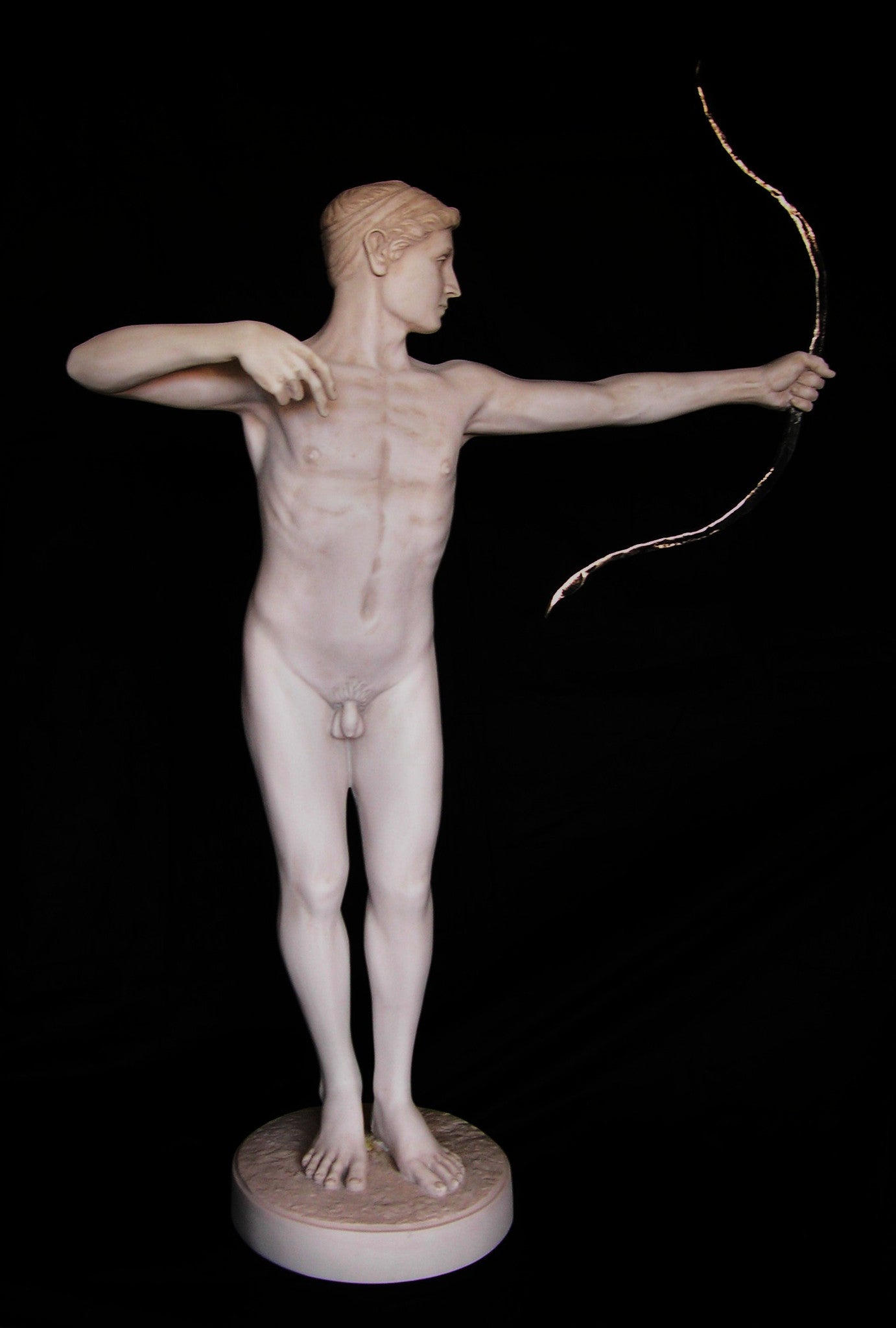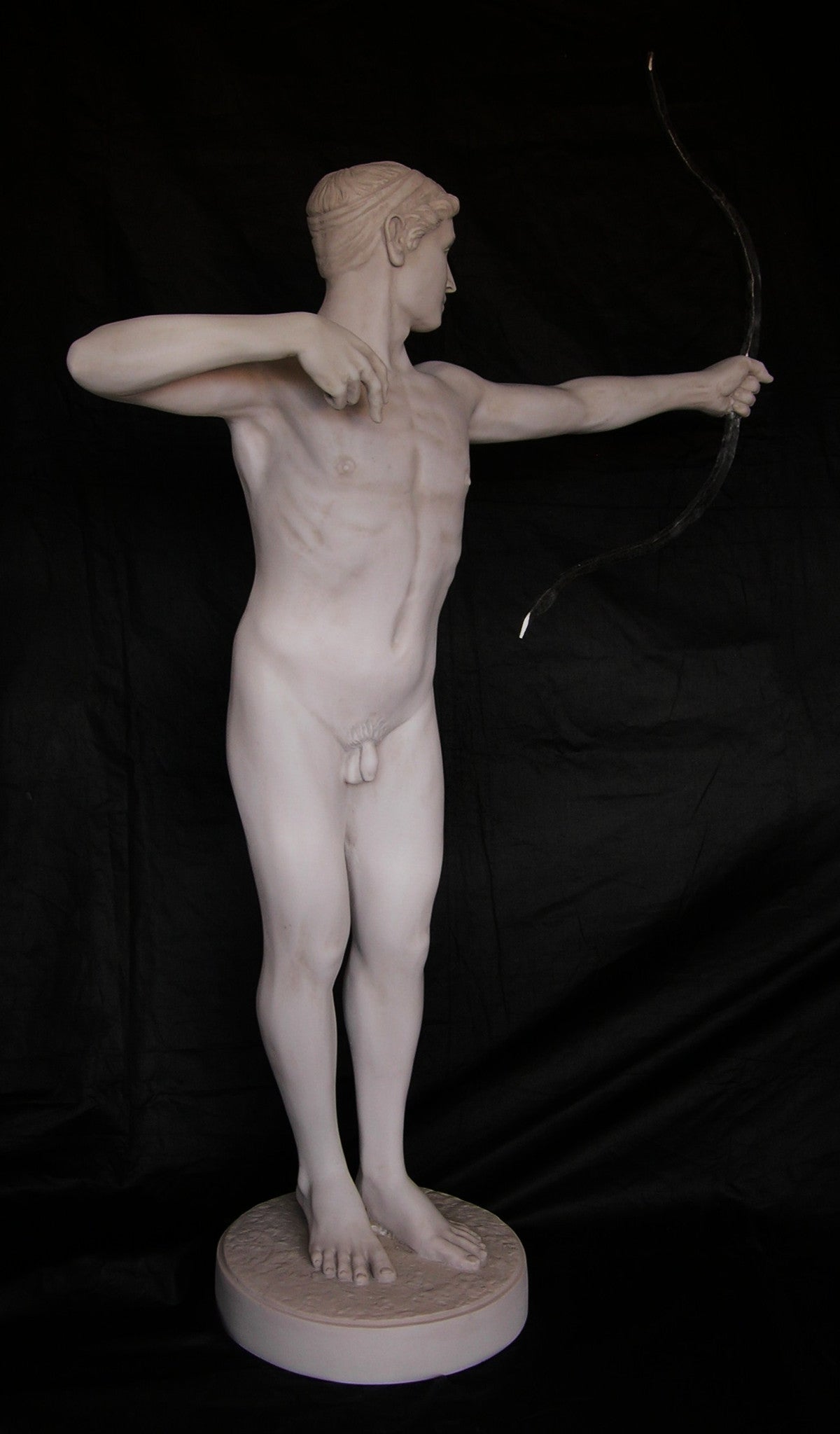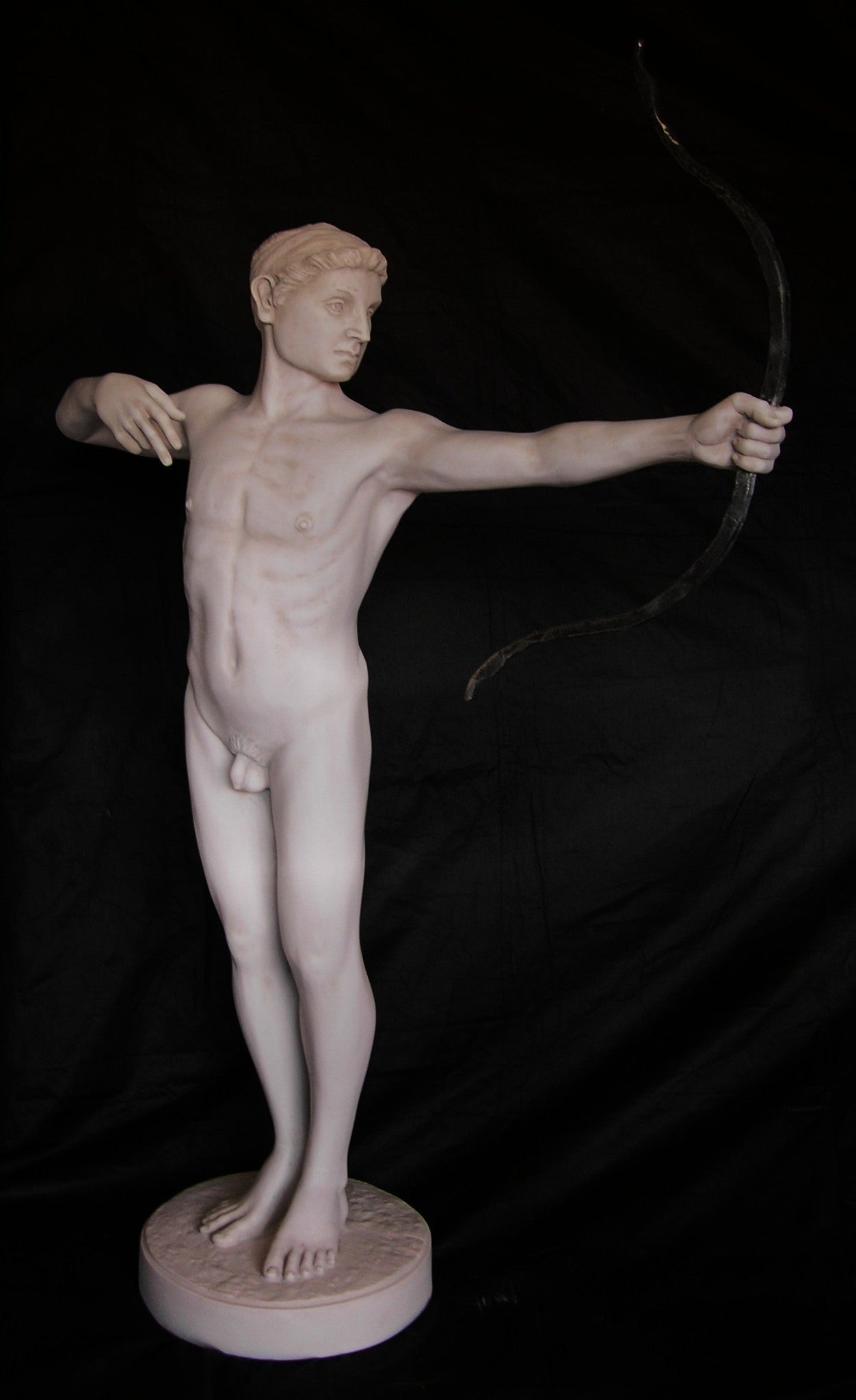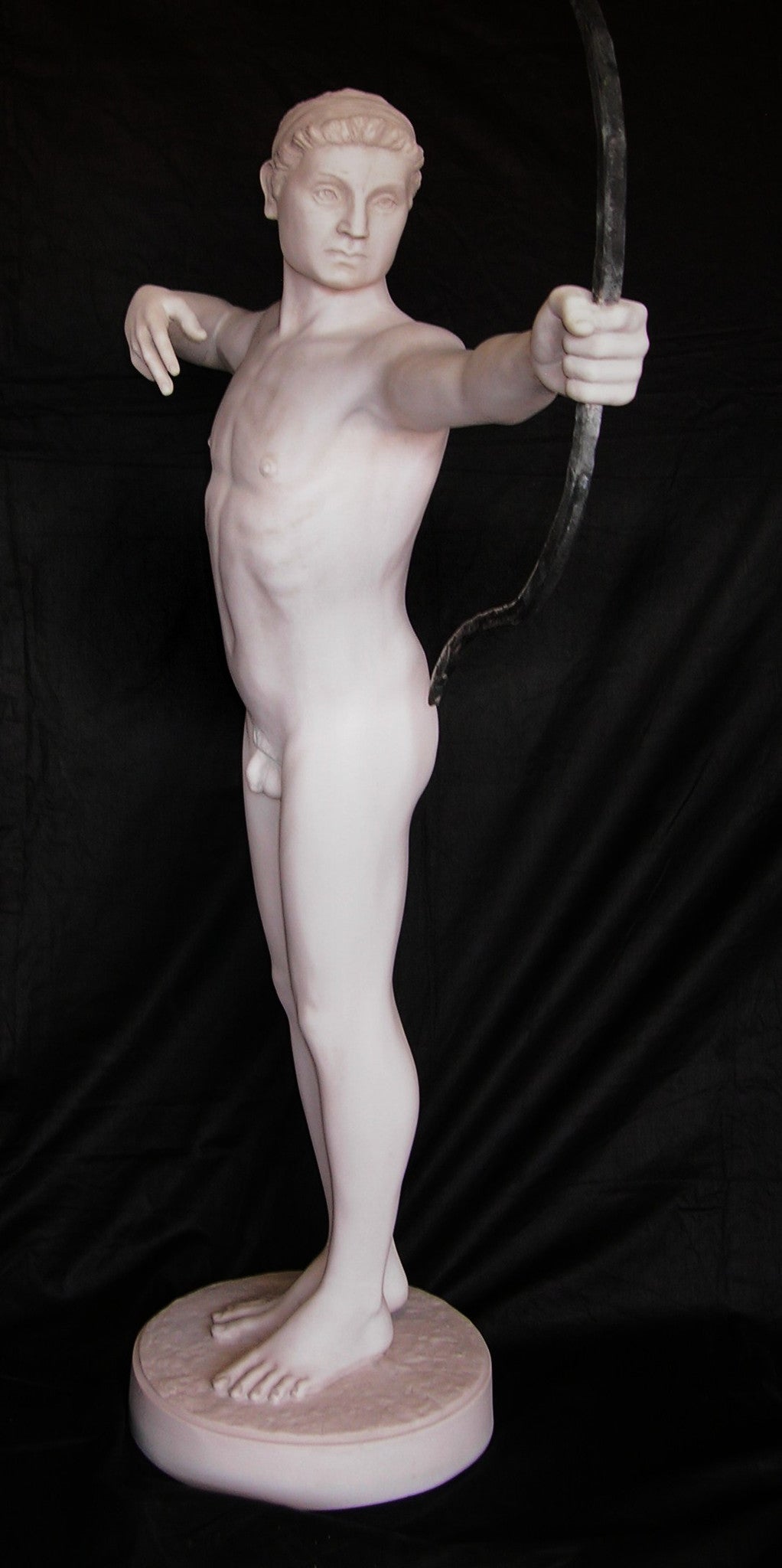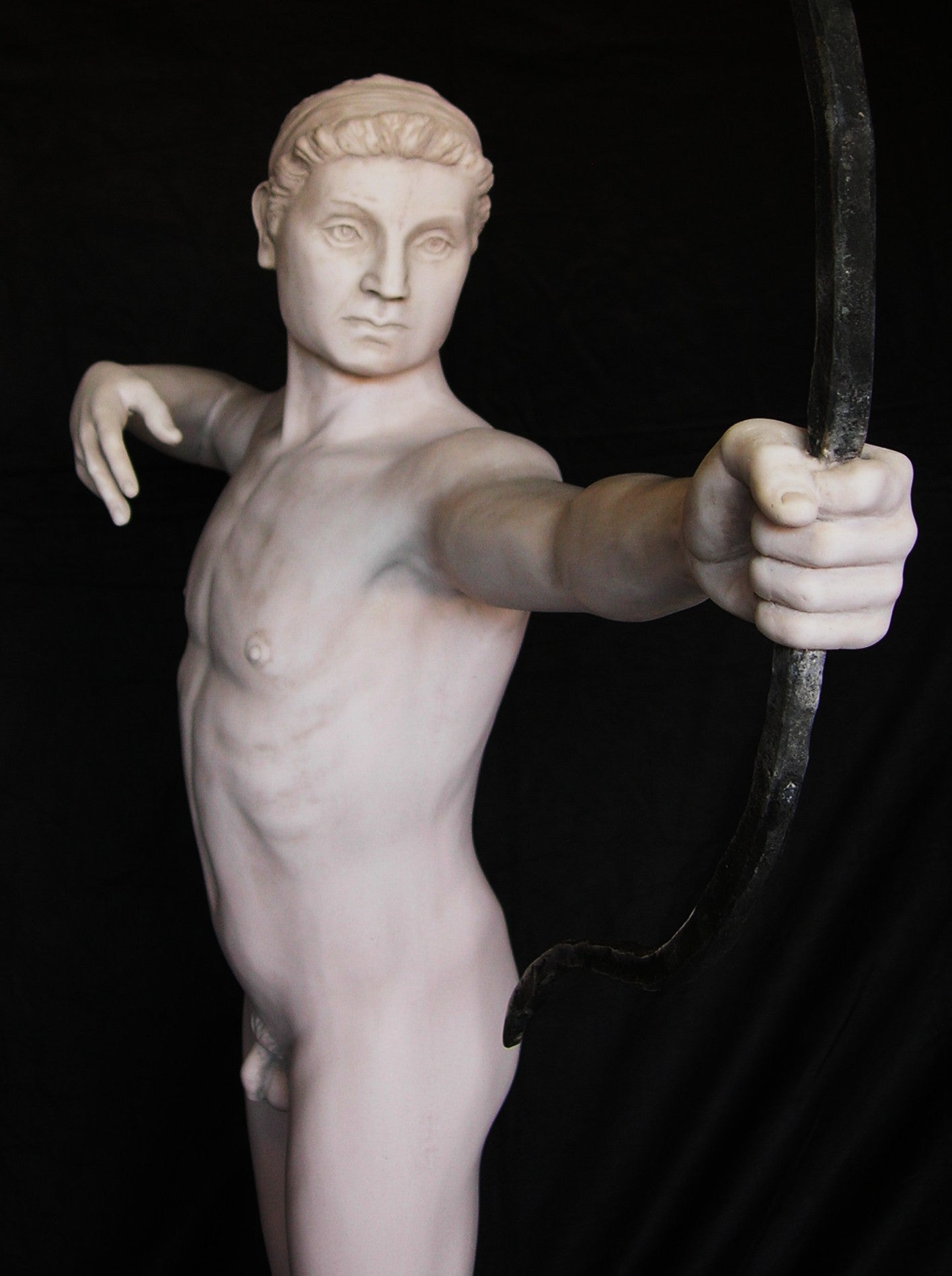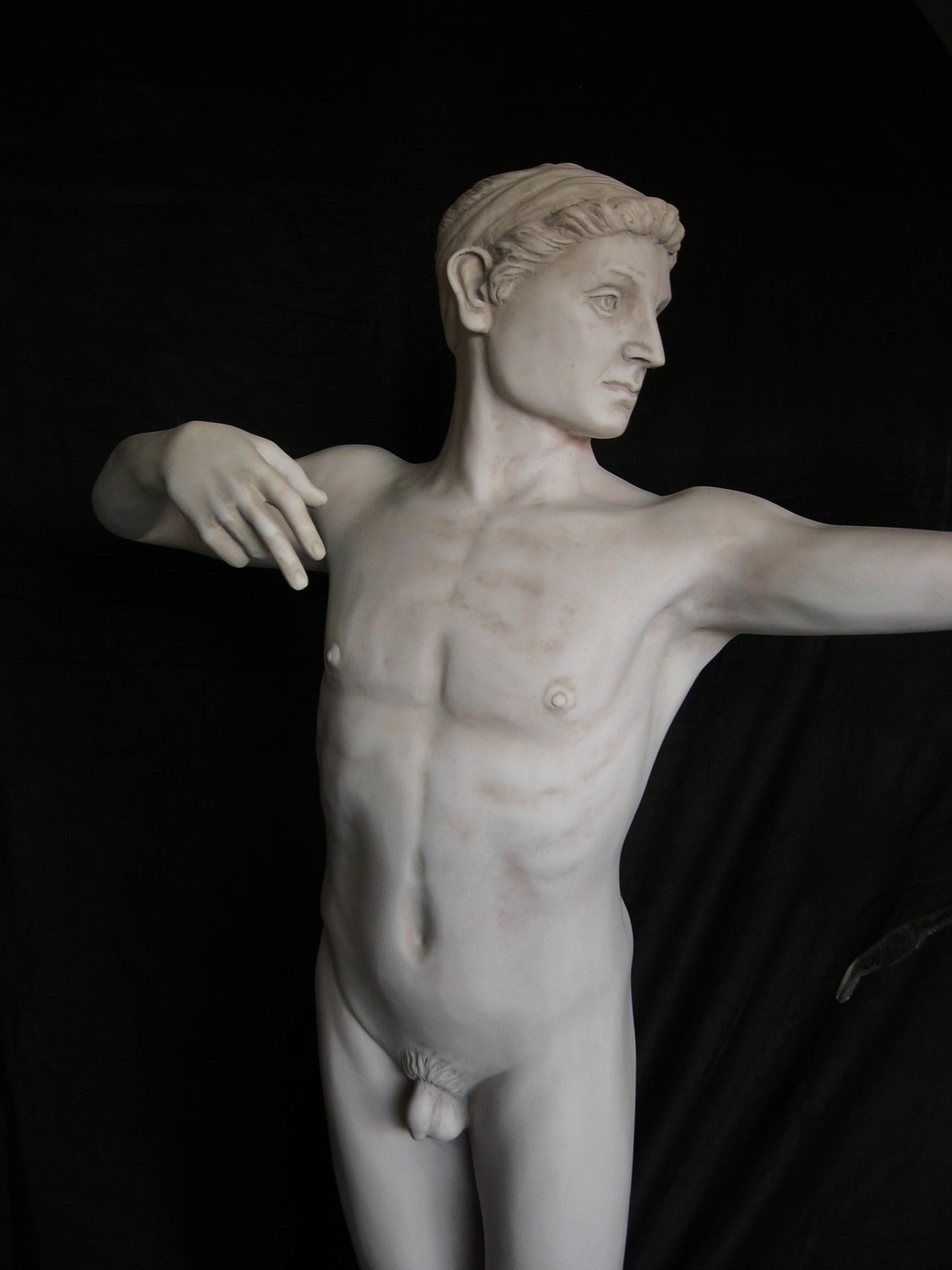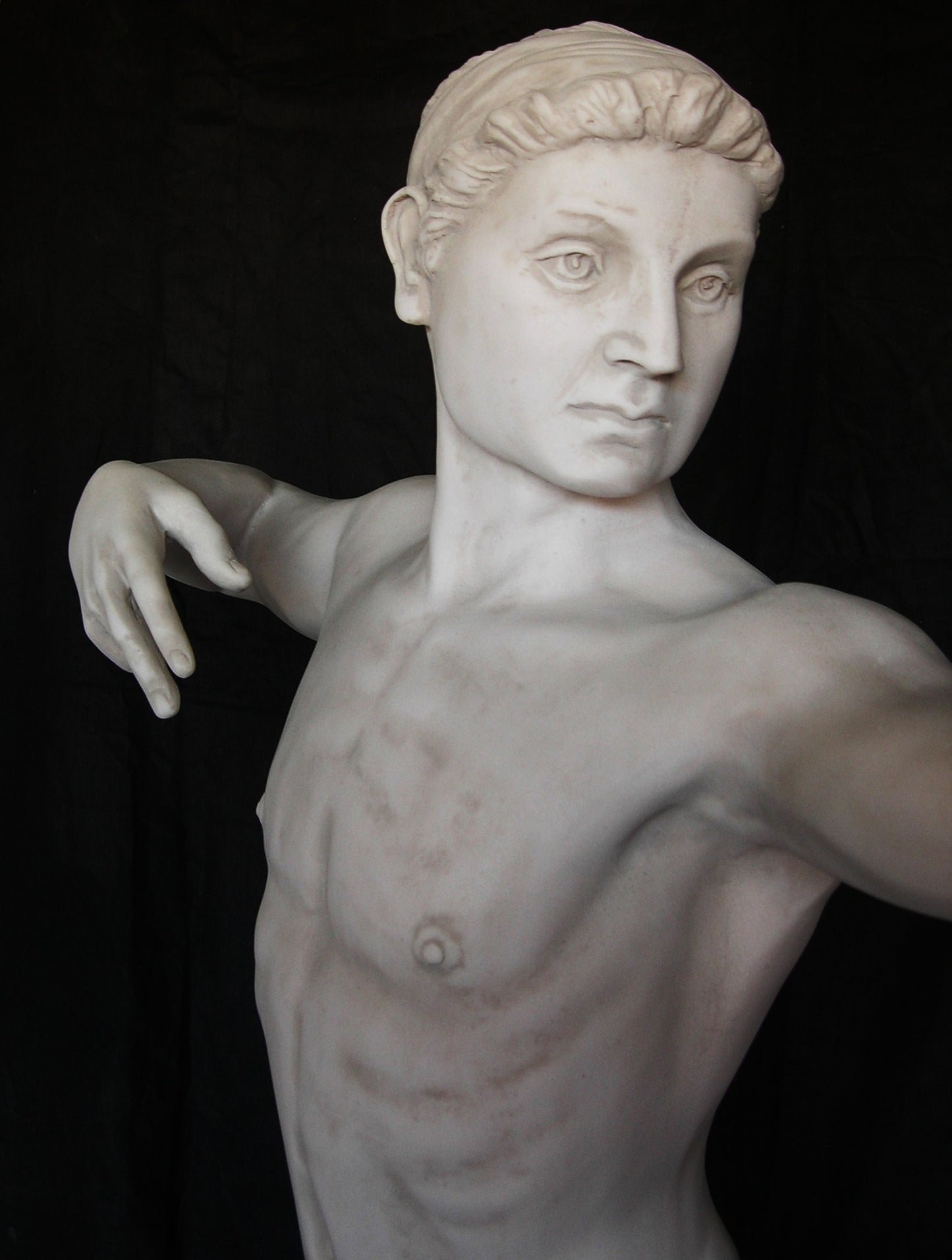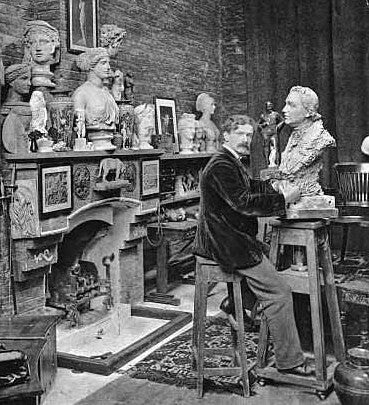Sculptured Arts Studio
Teucer The Archer
Teucer The Archer
Couldn't load pickup availability
Teucer statuette, after, Sir William Hamo Thornycroft, 1881.
In antique cast Carara marble with forged iron Bow.
This large statue depicts Teucer, from Homer`s lliad, son of Telamon and Hesione and brother of Ajax, he was the best archer among the Greeks of Troy.
This fantastic statue of Teucer, by the renowned British artist Thornycroft is said to be a turning point in British art of the time, his work of the early 1880s helped catalyze sculpture in the United Kingdom toward developing new directions. In sum, he provided an important transition between the neoclassical and academic styles of the 19th century.
Thornycroft, (1850-1925) was one of the three leaders of the `New Sculpture` movement, and this piece is one of the three founding icons of that movement. The work reflects Thornycroft’s deep appreciation for the early masterpieces of Greek art, while at the same time revealing his desire to move the art of sculpture toward something more naturalistic and expressive.
Here, Thornycroft chooses the same subject as the Apollo Belvedere, in which the god is shown just at the moment when he has released the arrow from his bow to kill the monster Python. But Teucer is depicted as something infinitely less remote and godly, more physical and athletic. The hero's muscles are still tensed, his back arched, and his gaze follows the shaft as it flies toward its target.
After the exhibiting of the `Teucer` at the Royal academy, Thornycroft had secured his future and he continued to be a central member of the sculptural establishment and the Royal Academy into the 20th century, and was commissioned by the nation to sculpt many major pubic monuments, including his renowned General Gordon, he was knighted in 1917.
The original Teucer was purchased from the artist for the British nation, by the Chantrey of london bequest in 1882.
(Picture shows Hamo Thornycroft in his studio 1884)
Size.
100 tall x 73 wide x 20 deep cm.
